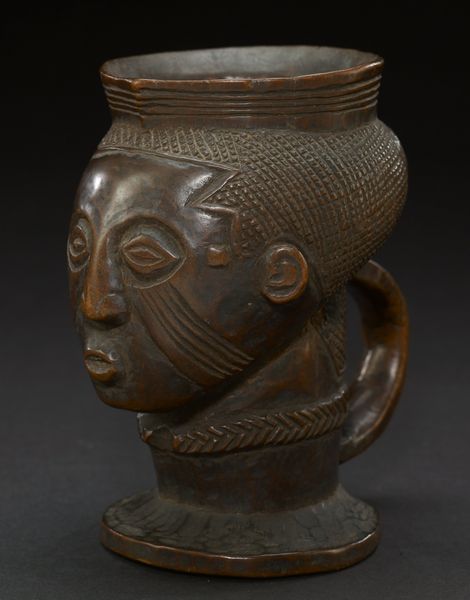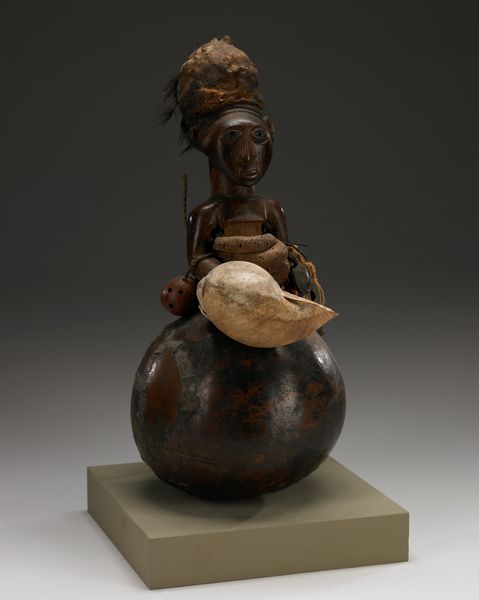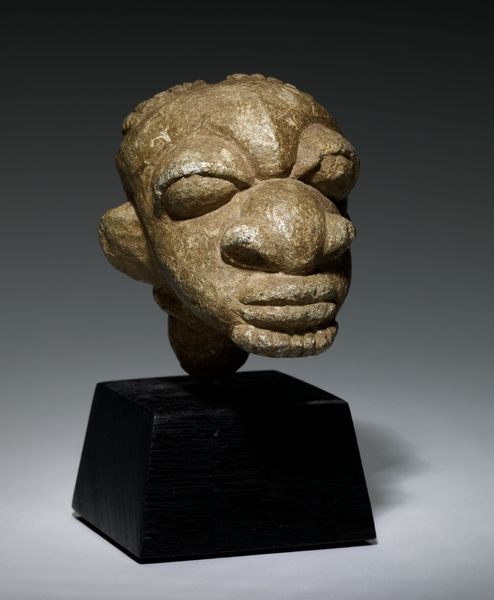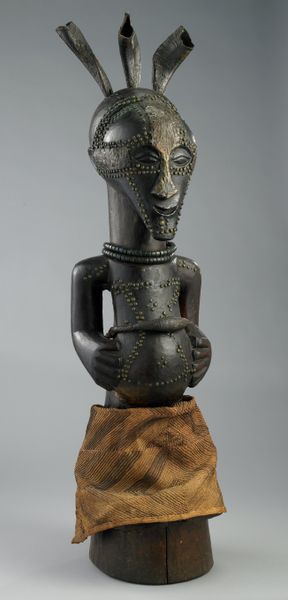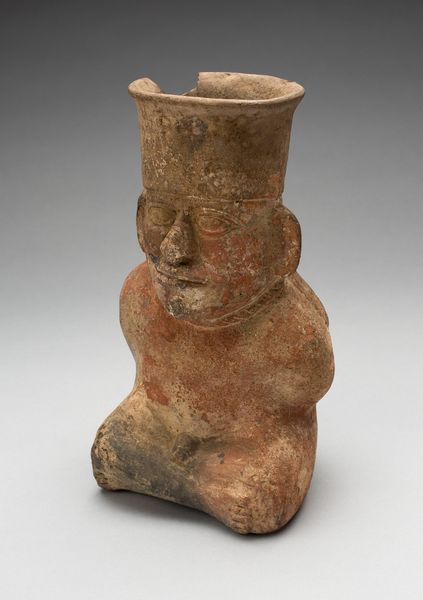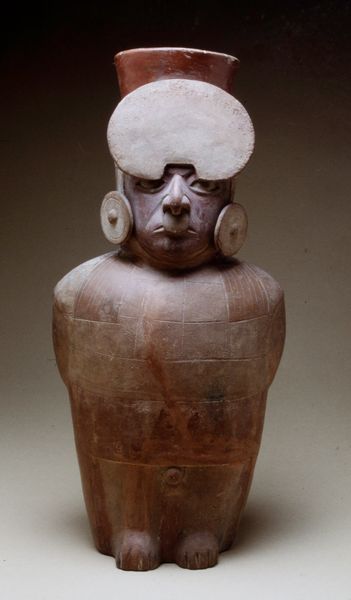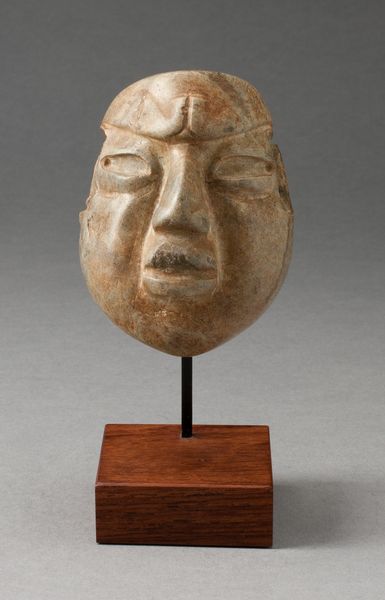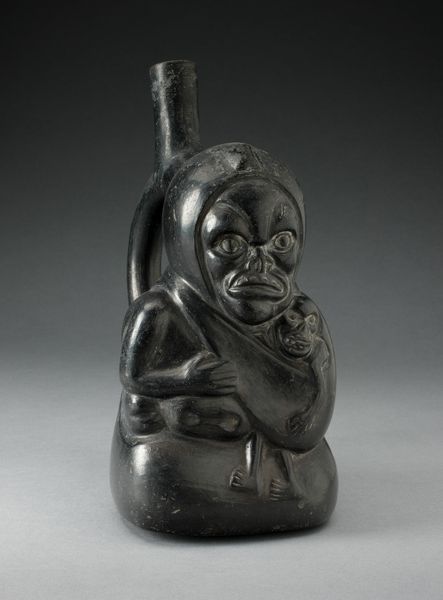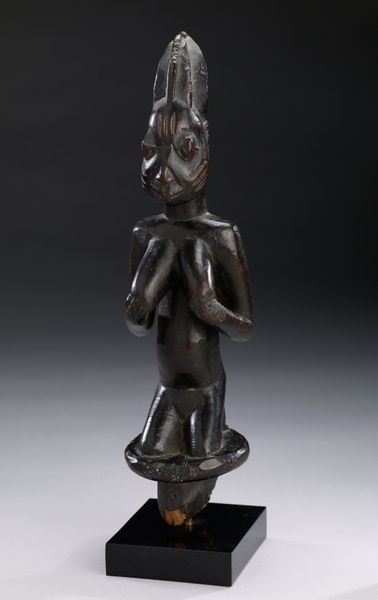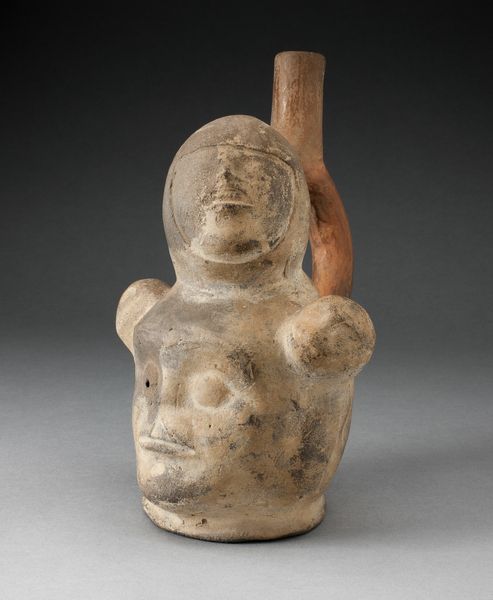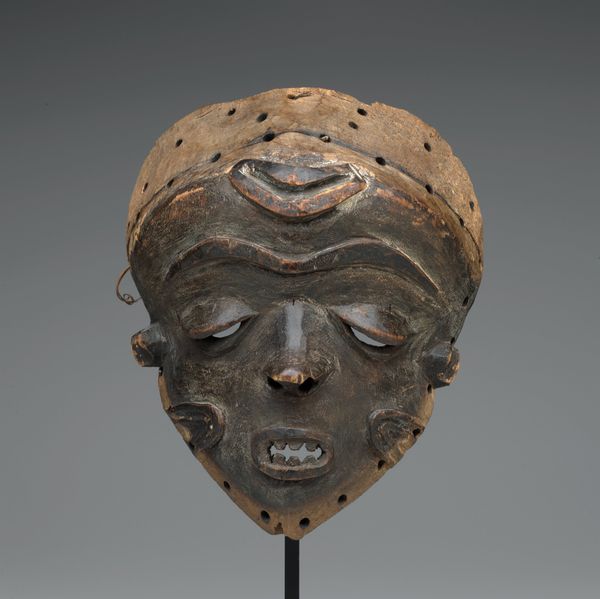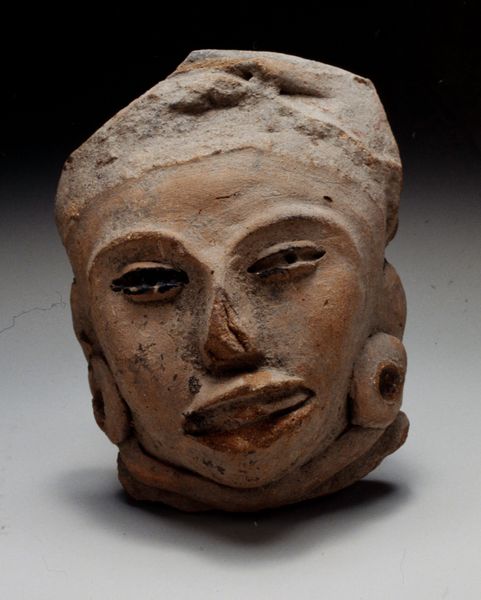
sculpture, wood
#
portrait
#
african-art
#
stone
#
sculpture
#
figuration
#
sculpture
#
wood
#
yoruba-art
Dimensions: 9 × 4 1/2 × 5 in. (22.86 × 11.43 × 12.7 cm) (with base)
Copyright: Public Domain
Curator: This striking sculpture, titled "Cup," dates back to around 1900 and resides here at the Minneapolis Institute of Art. Crafted from wood, it reflects the rich sculptural traditions of the Yoruba people. Editor: Immediately, I’m struck by the austerity of its form. The polished wood absorbs light, emphasizing the geometric planes of the face and the vessel it becomes. There’s an arresting contrast between its functionality as a cup and its profound representational qualities. Curator: Indeed. It transcends simple utility. Cups like this often served ritualistic purposes within Yoruba society. Consider the era; this was a time when African art was gaining attention, often fraught with the politics of representation within colonial frameworks. How do you feel that historical tension informs its interpretation today? Editor: Semiotically, it's compelling. The vertical scarifications, so meticulously rendered, operate as potent signifiers of identity. It merges the personal—the face, unique yet stylized—with the communal, expressed through culturally-specific markings. Its function is further encoded by the lip of the "cup," adding additional function and cultural complexity. The gaze is both serene and knowing, like looking directly at the viewers while observing. Curator: Precisely, and understanding the socio-political landscape contextualizes the artistry. The Berlin Conference, for example, solidified the scramble for Africa during this period. Art became deeply implicated in these colonial dynamics. Yoruba art's impact and collection globally had complicated trajectories. It becomes an artifact laden with complex historical and cultural burdens. Editor: Looking beyond those extra factors you mention, and simply aesthetically speaking, it exemplifies sculptural concision. Every cut is so considered and restrained to highlight an organic elegance. In this manner, the materiality itself acts as part of that conversation, where form serves content, and vice versa. It showcases such formal complexity through relatively minimal design elements, which adds to my view. Curator: Absolutely. Reflecting on it, "Cup" epitomizes the fusion of art, object, and identity, its visual power resonating profoundly even over a century later. Editor: I agree, observing "Cup" gives the viewer an interesting juxtaposition. Its geometric balance with detailed identity, offers us a potent reflection of cultural identity intertwined with individual portraiture and broader African artistic legacies.
Comments
No comments
Be the first to comment and join the conversation on the ultimate creative platform.
